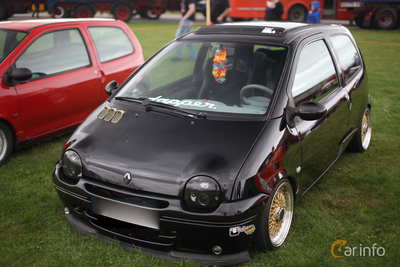Renault Twingo Generation 1 (Facelift 2004)
Introduction
The Renault Twingo Generation 1, known for its popular facelift in 2004, is a small city car that has gained a significant following since its initial release in 1993. Its unique design and compact size have made it a favorite choice for urban dwellers and those seeking a practical and nimble vehicle. With the facelift in 2004, Renault aimed to refresh the Twingo's appearance and add new features to make it even more appealing in the competitive market.
Exterior Design
The facelifted Renault Twingo Generation 1 introduced several changes to the car's exterior design. The most notable update was the restyled front end, featuring a new grille and headlights, giving the car a more modern and dynamic look. The bumper was also redesigned, giving the Twingo a cleaner and more aggressive appearance. Additionally, new colors and alloy wheel options were made available, allowing owners to personalize their car to their liking.
Interior and Features
Inside the Twingo Generation 1, the facelift brought various upgrades to enhance comfort and convenience. The dashboard received a fresh design, incorporating higher-quality materials and an improved layout of controls and instruments. The seats were redesigned to offer better support and ergonomics, ensuring a comfortable driving experience. Renault also added new features such as power windows, steering wheel-mounted controls, and an upgraded audio system, enhancing the overall driving enjoyment.
Engine and Performance
Under the hood, the Twingo Generation 1 facelift retained the same engine options as its predecessors. The range included both petrol and diesel engines, offering a balance between fuel efficiency and performance. The petrol engines featured various power outputs, catering to different driving preferences. The Twingo's small size and light weight contributed to its agility and maneuverability, making it ideal for navigating narrow city streets and tight parking spaces.
Safety and Technology
In terms of safety, the facelifted Twingo Generation 1 introduced new features to enhance occupant protection. These included front and side airbags, seatbelt pre-tensioners, and improved structural rigidity to withstand impacts. Despite being a small car, Renault prioritized safety in its design, ensuring the Twingo could offer a secure driving experience.
Although the technology in the Twingo Generation 1 was not as advanced as more recent models, it still provided necessary features for its time. The facelift added an upgraded audio system with improved sound quality, making every journey more enjoyable. Additionally, Renault incorporated new electronic systems, such as ABS and power steering, to enhance overall vehicle control and safety.
Conclusion
The Renault Twingo Generation 1 facelift in 2004 breathed new life into an already successful car. The refreshed exterior design, upgraded interior features, and improved safety measures made it an attractive option in the market. The Twingo's compact size and efficient engines made it an ideal choice for urban driving, ensuring effortless maneuverability and fuel efficiency. With its affordable price, distinctive design, and practicality, the Twingo Generation 1 facelift remains a popular choice in the small car segment.


